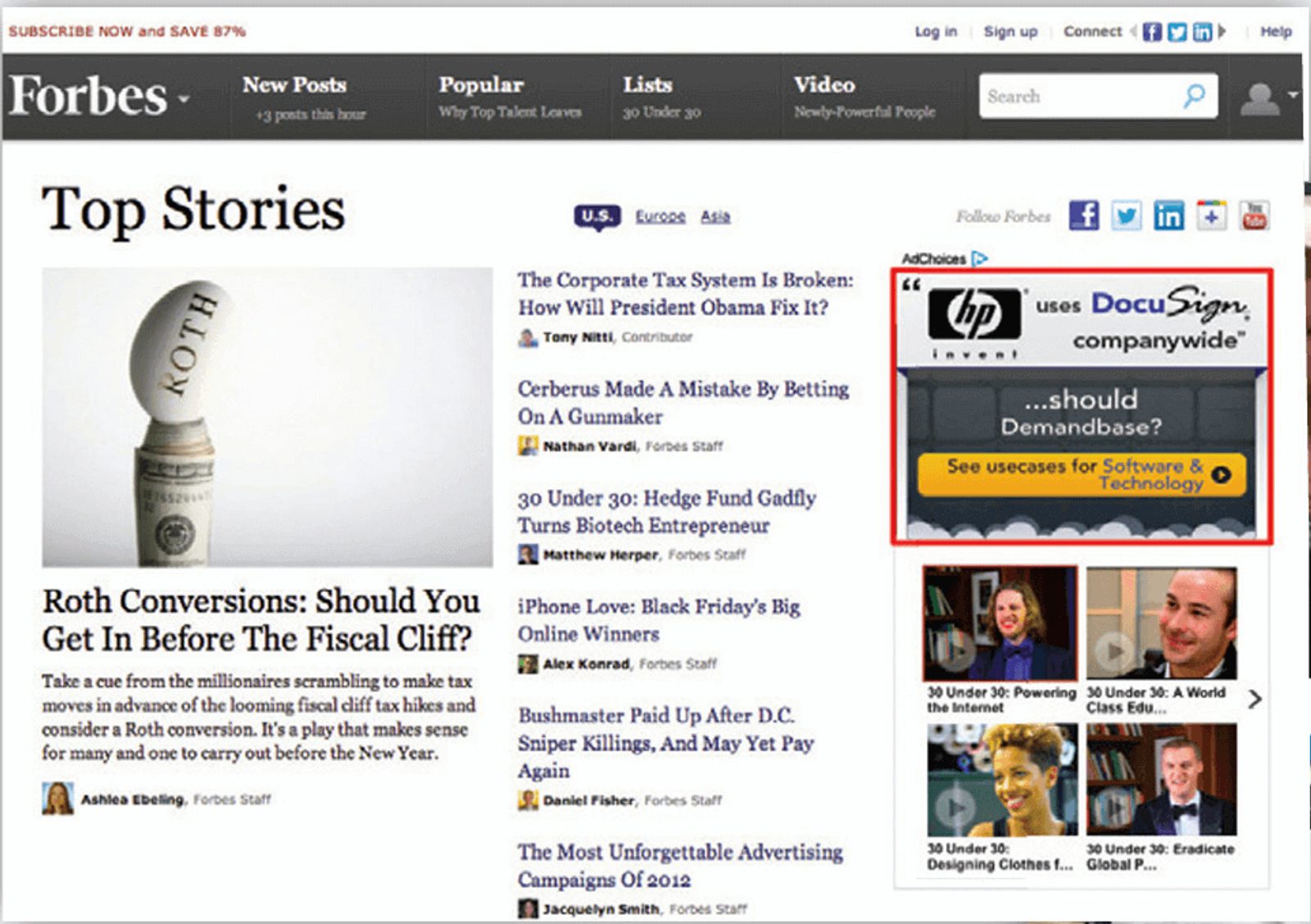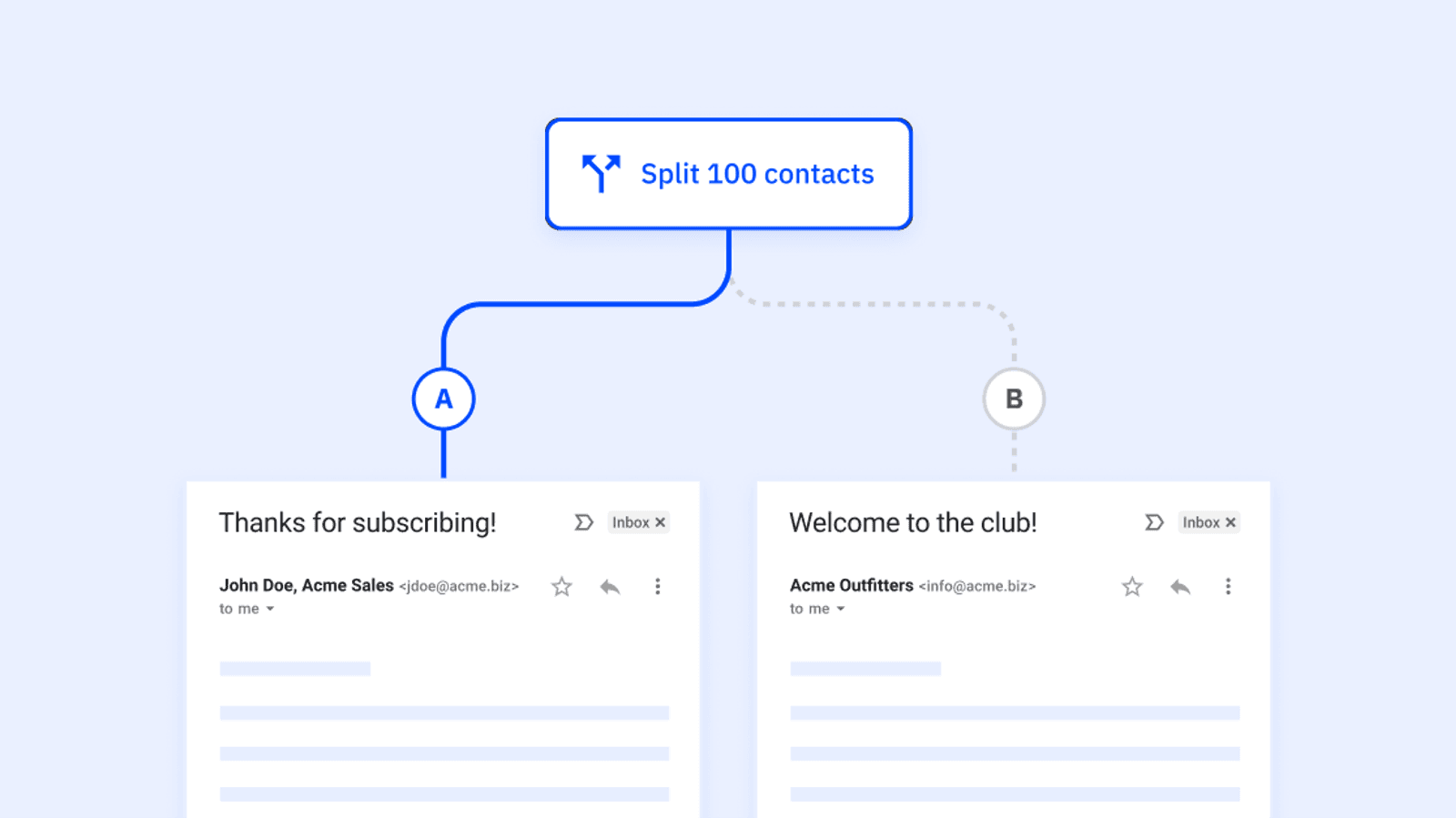Thanks to massive marketing tech improvements and ad space availability, finding new customers has never been easier.
Finding the right customers, however, is a little more elusive.
Account-based marketing flips the traditional marketing approach on its head by first identifying key accounts you want to sell to and then targeting them specifically.
With account-based marketing, you’re literally choosing your customer, eliminating the need to consistently develop new ways to attract potential buyers that fit your ideal company profile (ICP).
In this article, we’ll explore how to use account-based marketing to align sales and marketing to closing your ideal customers and cover 6 of the most powerful tactics around.
Table of contents
What is account-based marketing?
Account-based marketing is a customer acquisition approach that identifies target accounts and creates personalized marketing campaigns to attract, engage, and convert those companies.
To effectively understand account-based marketing (ABM) properly, it’s helpful to compare it to the traditional or regular marketing model.
In a non-ABM approach, marketers cast a wide net to attract any customer that might fit a given set of characteristics (such as your buyer persona or ideal company profile).
The marketing department is responsible for capturing leads and nurturing them until they’re sufficiently qualified to interact with a sales rep. What this “sufficient qualification” actually looks like differs from company to company, but the main idea is that the lead demonstrates some form of purchase intent.
From there, the marketing team may hand over the customer to sales or collaborate to close the deal. However, customers may fall off throughout this process (often referred to as the sales and marketing funnel).
Not all leads will make it through the nurturing phase to a sales conversation, and not all customers that speak to a sales rep will end up purchasing.
This traditional model is illustrated by the inverted triangle.

Notice that the account-based marketing model is visualized as the inverse of the traditional SaaS marketing funnel.
That’s because, with an account-based marketing approach, you’re not casting a wide net to attract everyone and then qualifying prospects from the bounty.
Compare this to the upright triangle’s approach.
In this top-down visual, you start with a clear picture of your ideal target customer (account). Then comes the research phase, where you look at the addressable market and identify specific accounts to target.
The 2 models share an engagement phase, though this looks very different in an ABM campaign, as it’s entirely personalized to the account you’re zeroing in on.
From there, the idea is to form the relationship, close an initial deal (land), and then have the customer success team work their magic to grow that account (expand).
Account-based marketing is a B2B practice and is generally used for high-value and enterprise-facing opportunities due to the massive time and cost commitments involved.
What are the benefits of account-based marketing?
Account-based marketing offers a number of important benefits for companies looking to work with specific accounts and who are focusing on long-term revenue and account growth over pure customer acquisition numbers.

To be sure, account-based marketing is not an ideal approach for every business.
Consider a B2C SaaS company like Netflix. It wouldn’t be realistic for Netflix to identify target accounts (i.e., individuals) and dedicate tons of resources to close those deals for a mere $10 per month.
However, if you’re in the B2B realm and can cater to enterprise-level companies and close deals that reach hundreds of thousands, then ABM might be a good fit for you.
Here’s why.
1. Higher-value accounts
Account-based marketing gives you the ability to specifically target high-value accounts.
Instead of publishing content you hope might reach enterprise-level prospects, you can identify which companies meet certain criteria like employee headcount or annual revenue requirements and then go after them specifically.
2. More relevant customer experience
An ABM approach is also beneficial from the customer’s perspective, as your marketing efforts are specifically targeted toward their needs, industry, and challenges.
That means less translation of broad value propositions and more relevant and realistic customer experiences.
Of course, this then flows back to you as a benefit, as a better customer experience is more likely to result in a sale and a positive long-term relationship.
3. Alignment between sales and marketing
Account-based marketing helps bridge the long-standing gap between sales and marketing. Though it’s called account-based marketing, it’s really a collaborative play.
Each department contributes their own expertise to the process, and there are clear dividing lines on tactics and activities undertaken. However, sales and marketing must work closely together throughout the entire sales cycle for ABM to be effective.
4. Measurable ROI
Because you’re dedicating time, money, and other resources to specific accounts, you can easily and accurately measure your return on investment for account-based marketing activities.
You know how much you’re spending to attract a given account, and you know the value of their contract, meaning you can calculate ROI at the account level. In the traditional model, you can only calculate averages, like ROI on marketing spend and your average customer acquisition cost.
5. Highly-scalable
While the regular approach to marketing is generally scalable, there is sometimes an upper limit where you might see diminishing returns.
ABM, however, is super scalable, depending on the size of your total addressable market.
You can only target as many accounts as you have resources for, meaning most ABM teams will only be working on a few deals at a time.
However, once you’ve built an effective account-based marketing playbook, scale simply comes from adding more resources to your sales and marketing teams.
Manage Your Account-Based Marketing With ActiveCampaign
6 super powerful account-based marketing tactics
Ready to create your first account-based marketing playbook?
Check out these 6 incredibly powerful tactics.

As you learn about each of these tactics, remember that ABM should be super personalized.
That means don’t copy these approaches word for word but use them as inspiration to experiment and find the best tactics for your target accounts.
1. Personalized gifts
Personalized gifting is one of the best examples of how account-based marketing moves away from traditional tactics and towards opening a conversation around your product.
The key here is personalization. Sending every account on your list a mug with your logo is not personalized gifting.
Engagio, now part of Demandbase, provides a great example of personalized gifts in an ABM context.

Engagio created personalized bobblehead figures of each of the key decision-makers at the companies they were targeting. Then, they invited their prospects to collect their bobbleheads at a hosted event.
This allowed Engagio to open up a discussion with each of their prospects in a less intrusive or “salesy” context. The result? Engagio had a 31% meeting rate.
When adopting personalized gifting in your account-based marketing strategy, prioritize items that raise brand awareness (i.e., branded products) and highlight your value proposition.
2. Targeted advertising
Targeted advertising is a great way to bring standard marketing practices into the ABM world.
With this account-based marketing tactic, you’re designing ad copy and creatives specifically targeted to a given prospect. This typically involves using their company logo and perhaps even the name of the person you’re targeting.
Check out this targeted advertising example from DocuSign.

DocuSign uses some powerful social proof (the fact that HP is one of their clients) to make its point, specifically targeting Demandbase with this personalized ad.
Like regular digital ads, targeted ads must connect with a core challenge that your customer is facing. The difference here, however, is that you can (and should) get super detailed about the challenge.
Use simple targeted ads like this one from DocuSign as early-stage attraction tactics. Then, as you learn more about a prospect’s specific needs (through company research and perhaps some initial qualification conversations), get even more targeted.
For instance, DocuSign might identify that HP is struggling with a slow sales cycle. They could then use the value proposition of faster contract execution through digital signatures in designing personalized ads to deliver to their prospect at HP.
3. Personalized OOH advertising
OOH (out-of-home) advertising probably isn’t the most common form of account-based marketing, given the inherent costs involved in commissioning a billboard or bus ad to target literally one company.
However, such a bold play can be incredibly effective.
Take this creative billboard used by Intridea, a UX platform, to target Ogilvy, one of the most renowned advertising agencies of all time.

Clearly, the ad is intriguing. It doesn't say a whole lot in and of itself, but it appeals specifically to their target audience (a company dedicated to creative advertising).
The billboard then directs readers (or the intended reader) to a custom landing page, which holds more information about how Ogilvy can benefit from using Intridea.
Of course, it’s important in such cases that you know for sure that your ad will be seen.
We’d expect, for instance, that the ABM manager who ran this campaign knew where their prospect worked and how they got to work each day, making this an effective and highly-compelling attention grabber.
4. Landing page customization
The best account-based marketing campaigns create immersive and personalized experiences across all marketing channels.
That means moving beyond basic personalization attempts like using a prospect’s name in a cold outreach email and using specialized software tools to create customized landing pages with dynamic content.
Take this example from Dialpad, which used a personalized landing page to target the Director of Sales Operations at Moveable Ink, an AI-powered marketing platform.

First, this personalized landing page calls out the prospect's name, role, and company. This is an easy attention grabber, as you’ll rarely see this kind of information on a landing page (whereas you’d be used to seeing it in the context of an email).
While this might grab attention, it’s not necessarily enough to be convincing on its own (anyone in a Director of Sales Operations role will know that identifying this kind of information rarely is).
There are a few other reasons why this personalized landing page is effective:
- It speaks directly to a challenge faced by a Director of Sales Operations: coaching a growing sales team.
- It demonstrates to the prospect that Dialpad understands their specific situation: they have at least 70 reps right now.
- It uses tech stack information to call out the software tools their prospect is currently using: Salesforce, Zendesk, and Google Apps.
- It succinctly summarizes their prospect’s primary benefit: reps who consistently hit their target.
Creating this kind of rich, personalized experience requires a specialized software platform to execute.
Learn more about website personalization in our guide: How to create an Experience with Web Personalization.
5. Customer-centric content
There are infinite ways to create customer-centric, personalized content to support an ABM campaign.
You can design ebooks, guides, and even personalized videos to educate and inform prospects. Or, you can get even more imaginative and take a leaf out of GumGum’s book.
Through some internet research, GumGum’s CMO found that John Legere, then-CEO at T-Mobile, was a huge Batman fan.

With this knowledge in hand, GumGum created an account-based marketing campaign that involved commissioning a custom comic book to play on that fact. It went over well. Check out the Tweet:

And yes, GumGum ended up winning the deal.
6. Creative direct mail
Account-based marketing tends to work best when you get a little creative and work outside the standard marketing conventions in today’s digital world.
Many ABM teams use direct mail as a way to differentiate themselves from competitors and to capture the attention of their prospects.
Here’s another great example from Engagio, an account-based marketing platform with a knack for ABM.

Engagio’s direct mail package includes a few branded takeaways (like a notebook and a pair of branded socks), but also gets a little more actionable by providing prospects with a helpful booklet on running ABM campaigns.
This direct mail care package identifies Engagio as an industry expert in a very tangible way to the prospect. And when that prospect decides to adopt ABM, Engagio, and their dolphin, will be the first service provider on their mind.
Frequently asked questions
What is account-based marketing in B2B?
Account-based marketing is a practice that focuses on targeted specific customers (accounts) through personalized sales and marketing efforts.
It’s almost exclusively the domain of B2B companies, as it’s a high-investment activity that is generally only cost-effective in environments where contract values are large (such as enterprise business deals).
What does an account-based marketing manager do?
An account-based marketing manager is responsible for designing, executing, and reporting on the effectiveness of ABM campaigns.
In larger companies, ABM managers may be responsible for managing a team of account-based marketing professionals and collaborating with sales leaders and other key revenue team members.
Why is account-based marketing important?
Account-based marketing is important for B2B companies looking to target enterprise-level customers and increase their average customer value.
With account-based marketing, you can better specify which companies you’d like to work with based on parameters like revenue, company size, and industry.
This can help you hold more targeted sales conversations and focus on the opportunities you know will deliver long-term profitability for your organization.
What is account-based marketing in SaaS?
Account-based marketing is a very specific sales and marketing practice. To enable ABM teams to work effectively and efficiently, a new vertical of SaaS (software as a service) tools has emerged: ABM software.
Account-based marketing software includes features like prospect data collection, personalized advertising capabilities, and account buying intent signals.
Conclusion
Account-based marketing is a powerful approach that flips the traditional marketing model on its head.
Done correctly, ABM can unite sales and marketing teams, increase ROI, maximize customer value, and attract the kind of customers you can confidently service for many years to come.
However, to deliver effective and efficient account-based marketing campaigns, ABM team leaders need to equip themselves with the right tools for the gig.
Learn more about ABM software in our dedicated guide: 8 Examples of Account-Based Marketing Software.






